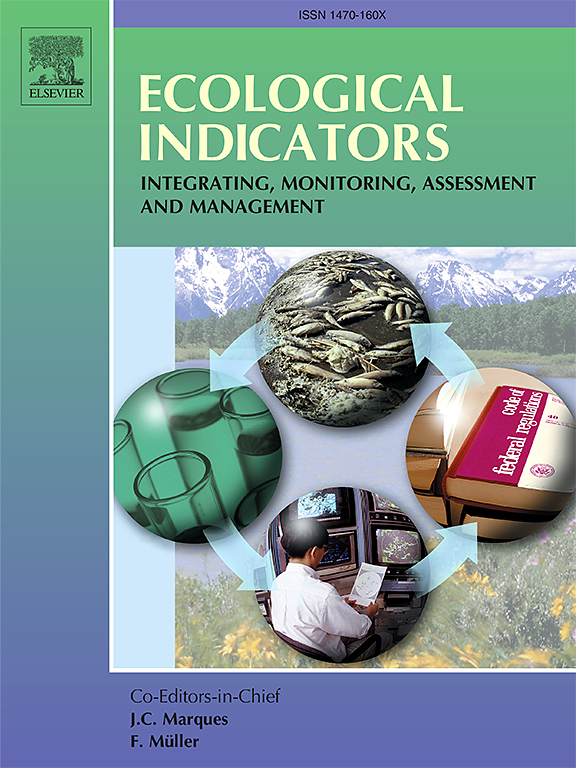Ecotourism suitability at county scale in China: Spatial pattern, obstacle factors, and driving factors
IF 7
2区 环境科学与生态学
Q1 ENVIRONMENTAL SCIENCES
引用次数: 0
Abstract
The comprehensive evaluation of the suitability of county-level ecotourism and the analysis of influencing factors can provide detailed guidance for the planning and development of ecotourism, which is of great significance for promoting the high-quality and sustainable development of ecotourism. However, few studies have focused on in-depth analyses of the influencing factors and its mechanisms of the county ecotourism suitability in China, which severely restricts the comprehensive development and sustainable management of county-level ecotourism in China. Based on this, this study conducts a comprehensive assessment of the county ecotourism suitability level in China and systematically explains the law of its spatial distribution. Secondly, the obstacle degree model and the optimal parameter geographic detector model were adopted to diagnose the internal obstacle factors and external driving factors of the county ecotourism suitability respectively. Finally, based on the theoretical analysis framework and the quantitative analysis results, the influencing mechanism of the county ecotourism suitability in China was systematically analyzed. The results show that the spatial distribution of ecotourism suitability of counties in China is extremely unbalanced, with large differences between east and west and north and south. The unsuitable areas and the less suitable areas were mainly concentrated in the plateau areas and arid areas in Western China. Moderately suitable areas and highly suitable areas were mainly concentrated in the mountainous areas of north and central China, the transitional zone of mountain plain, the mountainous areas of southwest China and the coastal areas of southeast China. There are obvious high-value and low-value agglomeration areas in the local space, and it shows an obvious “core-edge” structure. The low-value heterogeneous areas have emerged in the peripheral regions of important ecological source areas. In terms of internal obstacle factors, factors such as ecotourism resources, market development potential, ecological environment quality and service facilities conditions are the main obstacles to ecotourism suitability in northwest China. The main obstacle factors of hilly county, mountain county and plateau county are the same, while the main obstacle factors and their order of plain county are different from the first three. In terms of external driving factors, economic urbanization, population urbanization, land urbanization, the level of scientific and technological innovation, the level of low-carbon economic development, and regional environmental policy factors all have significant impacts on the county ecotourism suitability in China. However, the main driving factors in different regions and counties with different terrains show differences. The interaction intensity of among the main driving factors of ecotourism suitability in different river basin areas and counties with different terrains shows differences.

中国县域生态旅游适宜性:空间格局、障碍因素与驱动因素
县级生态旅游适宜性综合评价及影响因素分析可为生态旅游规划与开发提供详细指导,对促进生态旅游高质量可持续发展具有重要意义。然而,对中国县域生态旅游适宜性的影响因素及其机制进行深入分析的研究较少,严重制约了中国县域生态旅游的综合开发和可持续管理。在此基础上,本文对中国县域生态旅游适宜性水平进行了综合评价,并系统解释了其空间分布规律。其次,采用障碍度模型和最优参数地理探测器模型分别诊断县域生态旅游适宜性的内部障碍因素和外部驱动因素;最后,在理论分析框架和定量分析结果的基础上,系统分析了中国县域生态旅游适宜性的影响机制。结果表明:中国县域生态旅游适宜性空间分布极不平衡,东西南北差异较大;不适宜区和不适宜区主要集中在西部高原和干旱区。中度适宜区和高度适宜区主要集中在华北和中部山区、山地平原过渡带、西南山区和东南沿海地区。局部空间存在明显的高价值集聚区和低价值集聚区,呈现明显的“核心-边缘”结构。低价值异质区在重要生态源区周边出现。在内部障碍因素方面,生态旅游资源、市场开发潜力、生态环境质量和服务设施条件等因素是西北地区生态旅游适宜性的主要障碍因素。丘陵县、山地县和高原县的主要障碍因素相同,平原县的主要障碍因素及其顺序与前三者不同。在外部驱动因素方面,经济城镇化、人口城镇化、土地城镇化、科技创新水平、低碳经济发展水平、区域环境政策等因素均对县域生态旅游适宜性产生显著影响。但不同地域、不同地形的主要驱动因素存在差异。不同流域地区、不同地形县域生态旅游适宜性主要驱动因子之间的相互作用强度存在差异。
本文章由计算机程序翻译,如有差异,请以英文原文为准。
求助全文
约1分钟内获得全文
求助全文
来源期刊

Ecological Indicators
环境科学-环境科学
CiteScore
11.80
自引率
8.70%
发文量
1163
审稿时长
78 days
期刊介绍:
The ultimate aim of Ecological Indicators is to integrate the monitoring and assessment of ecological and environmental indicators with management practices. The journal provides a forum for the discussion of the applied scientific development and review of traditional indicator approaches as well as for theoretical, modelling and quantitative applications such as index development. Research into the following areas will be published.
• All aspects of ecological and environmental indicators and indices.
• New indicators, and new approaches and methods for indicator development, testing and use.
• Development and modelling of indices, e.g. application of indicator suites across multiple scales and resources.
• Analysis and research of resource, system- and scale-specific indicators.
• Methods for integration of social and other valuation metrics for the production of scientifically rigorous and politically-relevant assessments using indicator-based monitoring and assessment programs.
• How research indicators can be transformed into direct application for management purposes.
• Broader assessment objectives and methods, e.g. biodiversity, biological integrity, and sustainability, through the use of indicators.
• Resource-specific indicators such as landscape, agroecosystems, forests, wetlands, etc.
 求助内容:
求助内容: 应助结果提醒方式:
应助结果提醒方式:


